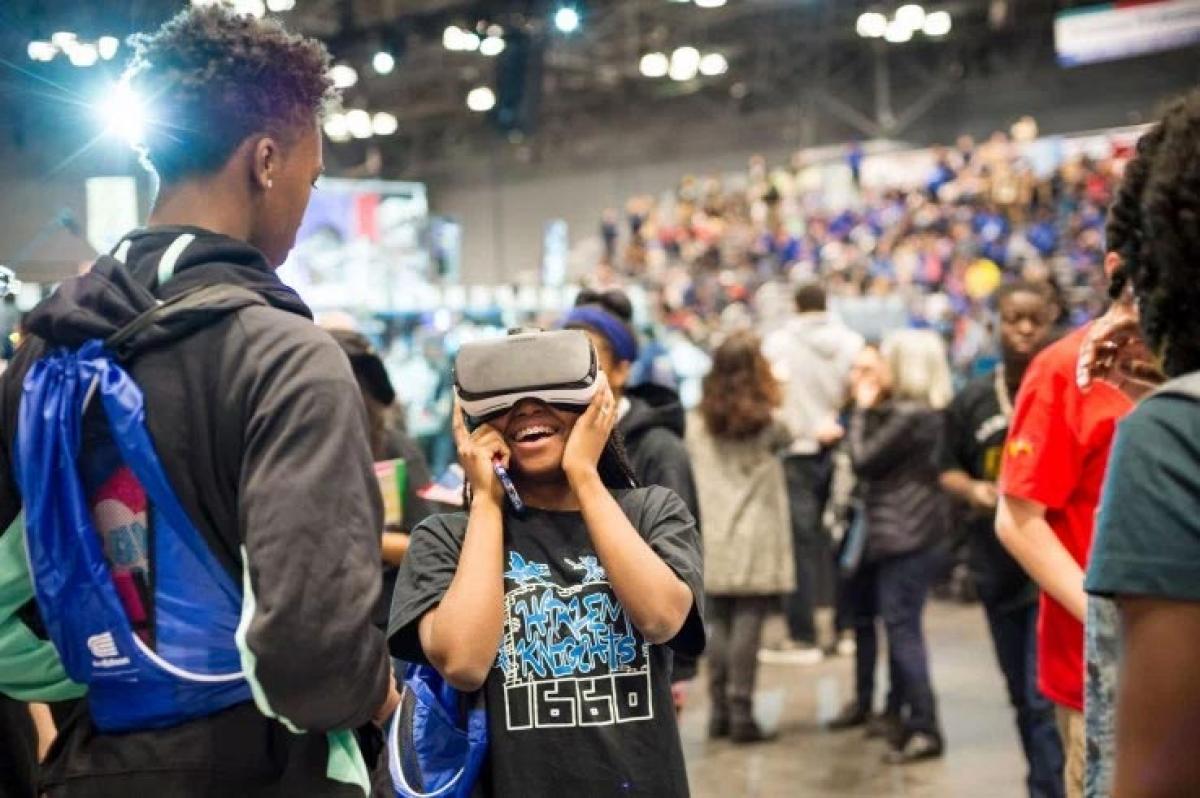Just In

However, with VR and AR poised to become a mainstream force, it’s the opportune time to think about how kids will interact with these technologies. Kids, of course, naturally adopt technology and love video games, which is one of the core use cases of VR and AR.
We’ve passed a significant milestone in consumer adoption of virtual reality and augmented reality — although it’s clear that we’re a few models away from a truly refined VR/AR experience.
However, with VR and AR poised to become a mainstream force, it’s the opportune time to think about how kids will interact with these technologies. Kids, of course, naturally adopt technology and love video games, which is one of the core use cases of VR and AR.
While clear progress on the path to VR and AR’s culture-altering potential in entertainment and education is truly exciting, where kids are concerned, new technology faces the very real pitfall of parental backlash. Every new cultural shift, from the jitterbug and movies to the iPhone and social media, is accused of destroying our youth.
The 1984 film Indiana Jones and the Temple of Doom created such a massive rolling boulder of parental outrage that the Motion Picture Association of America, which rates movies in the U.S., responded by creating the PG–13 rating.
VR and AR are new and unique in their ability to immerse users, so with parents still grappling with questions about 2D screen time impacting the health and development of their kids, it’s only a matter of time before VR and AR are thrown under the boulder.Anyone who has endured the mind-numbing drone of rote learning can understand the allure of VR and AR as educational tools.
In spite of concerns about appropriate content and screen time, no one can dispute the fact that VR and AR’s potential holds clear, legitimate benefits for kids. However, that potential will only reach maturity if the industry acts now to head off parental backlash.
Both innovation and funding in such a young industry would surely suffer from the chilling effect of mom and dad’s cold shoulder. But, quick and thoughtful action by industry players would provide insulation and allow the still nascent technologies to continue pushing the bleeding edge of technology while not bleeding out.
Games for good
Anyone who has endured the mind-numbing drone of rote learning can understand the allure of VR and AR as educational tools. Their immersive and engaging nature makes them exciting and powerful educational tools.
Teachers working to inspire enthusiasm and a love of learning in students understand the appeal of the experience and are increasingly using them in classrooms. The opportunities are mind-expanding. Math, science, history, art, literature — VR and AR can turn static or abstract learning into dynamic, interactive, immersive experiences.
For example, a VR project called “World of Comenius” in the Czech Republic enabled students to play around with atoms and get a “feel” for their behavior. Or take the startup Nearpod, which launched the first VR field trip earlier this year, and gives students the opportunity to explore the world without leaving their classroom.
This immersion empowers kids to gain a stronger grasp over what they learn and provides a safe place for them to explore and experiment. VR and AR also opens up new ways to collaborate and cultivate empathy in students, as well as to accommodate students with different learning styles.
Using technology encourages them to develop skills they will inevitably need in the digital future, and research shows that blended learning is good. It promotes autonomy and independence, empowering kids to pursue the learning tracks that most interest them and figure things out on their own.
Dodging the boulder
As exciting as all this is, the upshot is that we’re still in the very early stages of VR and AR, and their most compelling uses are yet to come. However, the potential that they promise is predicated on a healthy industry that can encourage and support innovation and experimentation.
Taking action to insulate VR and AR from backlash offers safe harbor, but it may also create opportunities by courting a key market. More than 30 years after Temple of Doom, the PG-13 rating is one of the most sought after and profitable. Not only did the MPAA’s decision provide parents with an effective way to address their concerns, but it also created a new storytelling niche that grew into a profit center.
Now is the time for VR and AR to grab its PG-13 moment.
Protecting innovation and cultivating a key market should start by taking a cue from the movie, television and console game industries and self-regulating. Concerns about age-appropriate content are easily addressed by a rating system, and concerns about screen time are as simple as providing controls like those parents use to control TV and iPad time. Allowing parents to input a code and set the amount of time their children are allowed to use VR and AR platforms will go a long way to putting parents at ease about how long their kids are using this new technology.
Taken together, the steps outlined above will create goodwill in the market by acknowledging and embracing parents’ role regulating their children’s use of technology. It may even speed the uptake of educational VR and AR by clearly designating products designed to that market’s sensibilities.
Read More »
Source:techgig.com

© 2024 Hyderabad Media House Limited/The Hans India. All rights reserved. Powered by hocalwire.com







